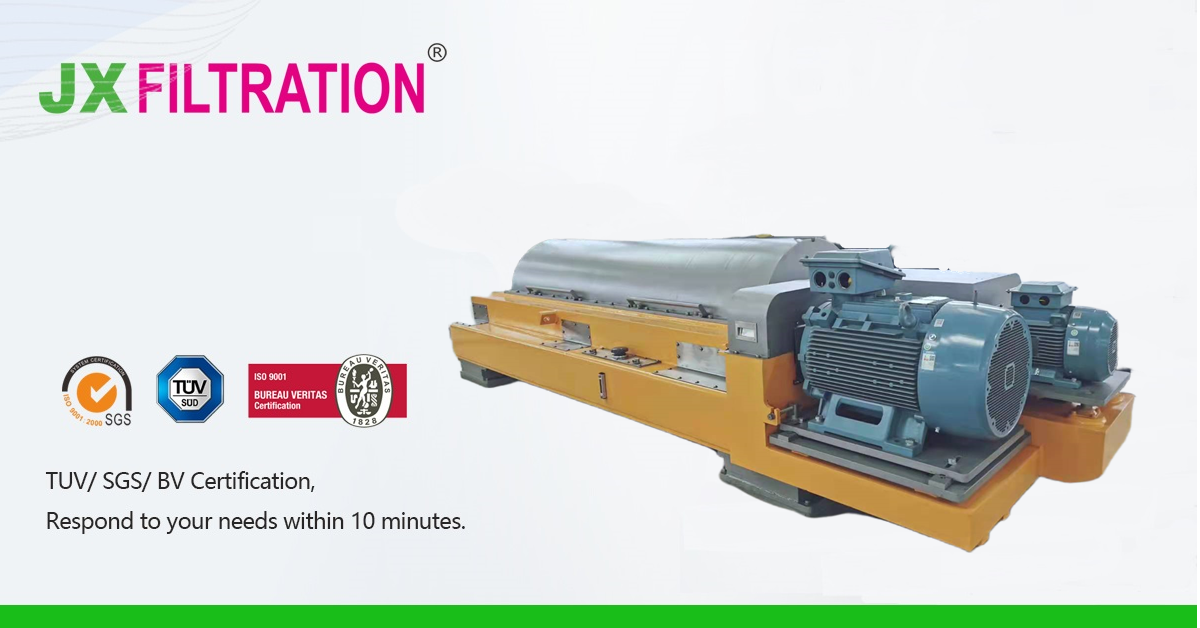What are the Advantages and Features of Horizontal Decanter Centrifuge?
The horizontal decanter centrifuge is a highly efficient, continuous solid-liquid separation device widely used in industries such as chemical, environmental protection, food, and pharmaceuticals. Its core advantages and features are as follows:

Key Advantages
- Continuous and Efficient Operation
- Can operate 24/7 without stopping for slag discharge (when equipped with an automatic slag discharge system), offering much higher processing capacity than batch centrifuges or filter presses.
- High separation factor (typically 1500–4000G), capable of rapidly separating solid particles as small as microns.
- Strong Adaptability
- Can handle high-concentration suspensions (solid content 1%–50%) and is effective even for viscous, fine-particle, or compressible materials (e.g., sludge, colloids).
- Adjustable parameters (speed, differential speed, etc.) allow adaptation to materials with different density differences and particle sizes.
- High Automation
- Integrated PLC/DCS control system for real-time monitoring of speed, temperature, torque, and other parameters, enabling automatic adjustment and fault alarms.
- Some models feature a CIP (Clean-in-Place) system for easy maintenance.
- Low Operating Costs
- No need for filter cloths or screens, reducing consumable costs; energy consumption is lower than traditional filter presses (e.g., belt filter presses).
- Simple maintenance, with main wear parts being the screw conveyor liner and bearings.
Core Features
- Dual-Rotor Structure
- Rotating Drum: High-speed rotation generates centrifugal force, separating solids and liquids into layers.
- Screw Conveyor: Operates at a differential speed (1–30 rpm) relative to the drum, pushing settled solids toward the discharge port while clarified liquid exits via the overflow port.
- Differential Speed Control
- Hydraulic or mechanical differential devices precisely control the speed difference between the screw and drum, regulating discharge rate and separation efficiency.
- Wear-Resistant Design
- Critical components (screw blades, drum inner wall) use wear-resistant materials like tungsten carbide or ceramics to extend service life.
- Enclosed Operation
- Fully sealed structure prevents material leakage, making it suitable for hazardous, odorous, or flammable substances (e.g., petrochemical wastewater, organic solvents).
- Multifunctionality
- In addition to solid-liquid separation, it can be used for liquid-liquid-solid three-phase separation, particle classification, or concentration/dewatering.
Applications
- Environmental Protection: Municipal/industrial sludge dewatering, river dredging, drilling mud treatment.
- Food Industry: Starch extraction, yeast separation, juice clarification.
- Chemical/Pharmaceutical: Catalyst recovery, antibiotic crystal separation.
- Mineral Processing: Kaolin classification, tailings dewatering.
Conclusion
The horizontal decanter centrifuge, with its high-efficiency continuous separation, strong adaptability, and low operating costs, is a core solid-liquid separation device in modern industry, particularly suitable for large-scale, high-demand applications. Selection should consider material properties (density difference, viscosity, corrosiveness) and processing goals (dewatering rate, capacity) for optimal parameter adjustment.
Contact Us Today for a Tailored Solution!
Julie
Email: sales@filtrationchina.com
Mobile / WA / WeChat / Line / Viber: +86 159 2865 0174

